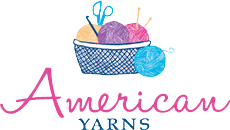As a person who crochets, you may know a lot of things when it comes to yarns like what the best quality would be and the different things you can do with them. However, not everything is widely known when it comes to yarns so here are some facts you might not know about yarn:
The earliest known yarn and fabric samples were estimated to be around 7,000 years old. These were found in Robenhausen, Switzerland and were bundles of fax fibers and yarns.
Before, yarn was spun on a rounded stick with tapered ends to which the fibers are attached and twisted which had a weight attached to it to keep it from rotating. This is known as the spindle and whorl which was used until the 1300’s.
In order to make yarn, there are about 15 different types of fibers used which are either natural or synthetic. Cotton is the most commonly used natural fiber. It is known to be the best selling type of yarn in America.
The most commonly used yarn color types are those with a single uniform hue. However, there are also other color types available such as:
- Heathered or tweed which is yarn with flecks of different colored fiber.
- Ombre which is yarn with light and dark shades of a single hue.
- Multicolored which is yarn with two or more distinct hues.
- Self-striping which is yarn dyed with lengths of color that will automatically create stripes when you knit or crochet.
- Marled which is yarn that is made from strands of different-colored yarn twisted together.
- The word crochet comes from the Middle French word croc or crochet which means hook. However, it is believed that the earliest form of crochets used a bent finger instead of a hook.
Crochet patterns are currently widely known and used but the very first crochet pattern was first published back in 1824 in a Dutch magazine.The crochet pattern was known as “Penelope” which featured delicate and detailed lacework for a bag.
During the 1800’s, women who crochet used to hold their hooks the same way you hold a pencil. They believe that holding it like a pencil makes them look daintier and more ladylike. Today, most crocheters hold a hook in the palm of their hand to reduce hand fatigue and carpal tunnel risks.


